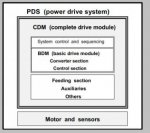I was wondering if anyone has done these tests. They require loading up VFDs which, as you know, requires a ton of equipment: 2 coupled motors, a regenerative drive used as load... not to mention structural costs like supplying the sources, securing the motors to the skid and etc.
Easier way I can think of is using resistors as load and tricking the VFD into thinking it is running a motor by running it in V/Hz. As far as I know CE test does not require anything weird like locked-rotor test, and all measurements are done at the input of the VFD. I may be wrong though.
I appreciate anyone's opinion on this. This is non-hazardous area only.
Easier way I can think of is using resistors as load and tricking the VFD into thinking it is running a motor by running it in V/Hz. As far as I know CE test does not require anything weird like locked-rotor test, and all measurements are done at the input of the VFD. I may be wrong though.
I appreciate anyone's opinion on this. This is non-hazardous area only.

